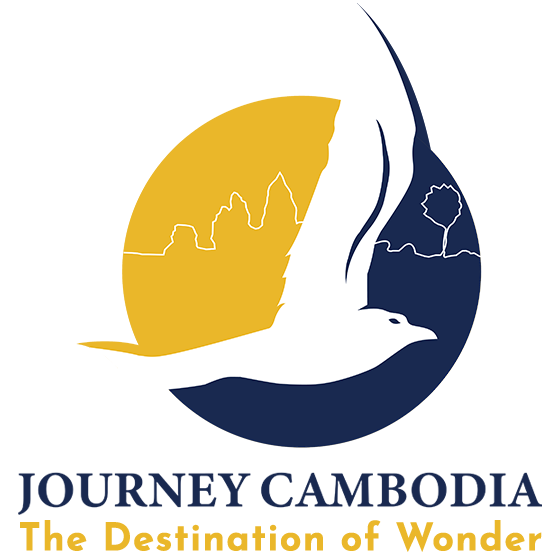What Does Bayon Temple Represent? 200 GIANT FACES STARE AT YOU – The Truth About Bayon Temple You Won’t Believe
Stone Giants With Secret Smiles That Will Blow Your Mind
Big stone faces watch you from every corner at Bayon Temple. The temple sits in the middle of Angkor Thom, an old city built 800 years ago. Guests often ask: what does Bayon Temple represent? Each year, many people come to Cambodia just to see these huge faces.
King Jayavarman VII built this amazing place. The stone faces are really big – as tall as a giraffe! Some faces smile, others look serious. All of them seem to follow you with their eyes. What does Bayon Temple represent? It shows the king’s power and his Buddhist faith. You’ll want to bring your camera when you visit.
The Big Stone Faces: Why Are They There?
Bayon Temple has 216 huge faces carved in stone. They’re about 13 feet tall! Four faces sit on each tower, looking north, south, east, and west. Many people feel like the eyes follow them around.
These faces stand for a Buddhist being named Avalokitesvara. He helps people who are sad or in trouble. What does Bayon Temple represent with all these faces? They show that someone is always watching over the land. It’s like having guards made of stone.
The big ears on the faces mean they hear what people ask for. You can see small smiles that make them look wise. War and weather have broken some faces. Most still look calm after all these years.
Is That The King’s Face On The Towers?
A man named King Jayavarman VII had Bayon Temple built around 1190. His kingdom was very big and strong then. Before him, most people followed Hindu gods. The king liked Buddhism better.
Many smart people who study old things say the faces look just like the king. He wanted everyone to think he was part god. The king probably thought this would make people respect him more.
Right in the middle of his city stands this temple. What does Bayon Temple represent for the king who built it? It was his way of saying “I am important” in a way that would last forever.
Chasing those amazing pictures at Bayon Temple? Whether you’re an early riser or a sunset chaser, Journey Cambodia has you covered.
Catch the first light at Angkor Wat with this unforgettable Sunrise Guided Tour – perfect for travelers who want to see the temples before the crowds roll in.
Or if you’re more into mellow afternoons and golden glows, the Angkor Wat Sunset Tour is your ticket to a relaxed, photo-worthy adventure.
Get your cameras ready – these tours are built for memory-making.
God Stuff: What The Temple Means For Faith
When they first built the temple, they mixed Buddhist and Hindu ideas together. Later kings who liked Hindu gods made some changes. The Buddhist parts stayed anyway.
So what does Bayon Temple represent about religion? It shows when people in Cambodia started to like Buddhism more than Hindu ways. All those faces stand for Avalokitesvara, who Buddhists believe helps anyone who needs it.
The faces look at all four directions because they want to see everyone. This fits with Buddhist teaching that we should be kind to all people, not just some. The whole temple is like a map of heaven and earth in Buddhism. Each floor means something different.
Pictures in Stone: Old Life Shown On Walls
The walls at Bayon Temple have more than 11,000 small carvings. These tell stories about gods and what normal people did back then.
You can see old battles, people buying food, cooking dinner, and catching fish. There are even kids playing games! The stone shows what life was like 800 years ago. Some carvings show circus acts. Others show babies being born. One even shows a chess game!
What does Bayon Temple represent in these wall pictures? It’s like a photo album from long ago. The carvings show what clothes people wore. They show what food they ate. They even show how they fought wars.
Your Trip To See The Giant Faces
Go to Bayon Temple early in the day or close to sunset. The light makes the faces look better for photos. Not many people come in the morning. At sunset, the rocks turn gold and orange.
You’ll find Bayon Temple in the middle of Angkor Thom. It’s about one mile north of Angkor Wat. Most tour guides take you to both places. You should plan to spend two hours looking around.
Keep your head up when you walk there! The big faces will pop out where you don’t expect them. Some faces look happy. Others look sad. Each one is a bit different.
The Most Unique Temple Sculptures in Angkor: Stone Faces That Still Speak Today
Why People Still Care About This Old Temple
What does Bayon Temple represent for Cambodia now? It makes the country proud of what their old kings could build. The temple shows that Cambodia was once very rich and smart. It helps today’s people remember their roots.
People who visit feel like they’re going back in time. The stone faces help us think about the people who lived long ago. While kings and their rules don’t last, the art they make can stay for a very long time.
Not many places in the world have big faces staring at you from all sides. This makes Bayon Temple special. If you go to Cambodia, you should see it.
How To See This Amazing Temple
Want to see what Bayon Temple represents with your own eyes? Journey Cambodia has great tours of Angkor Thom with Bayon Temple. Our guides know where to take the best photos. They tell you cool facts about the temple that most people miss.
One ticket lets you see Bayon Temple and many other old buildings nearby. You can buy passes for 1 day, 3 days, or 7 days.
The temple is open from 7:30 AM to 5:30 PM all week. Wear shoes that are good for walking. Bring a hat for the sun. Don’t forget water and your phone or camera. The faces look great in photos!
Call Journey Cambodia now to book a tour. Come stand next to stone faces that have been watching over this land for 800 years.
How to Take EPIC Photos at Angkor Like a Pro – Even with Your Phone
Questions People Ask About Bayon Temple
What does Bayon Temple represent in Cambodia’s past?
It shows when the Khmer kingdom was strongest under King Jayavarman VII. The temple marks when people changed from Hindu to Buddhist faith. It also shows how powerful the king was.
How many faces can I see at Bayon Temple?
There are about 216 stone faces at the temple. Each tower has four faces that look in four different ways.
Who made Bayon Temple and when?
King Jayavarman VII had it built around 1190. It was one of the last big temples they made at Angkor.
What do the stone faces mean?
The faces show Avalokitesvara, a Buddhist helper figure. Many people think they also look like King Jayavarman VII. This mixes the idea of a god and a king.
How much time do I need to see Bayon Temple?
Most people spend 1-2 hours there. If you want to look at all the wall carvings, you might need more time.
Can I see Bayon Temple and Angkor Wat in one day?
Yes, most tours take you to both places in one day. They are about one mile apart.
When is the best time to see Bayon Temple?
Early morning (7:30-9:00 AM) or late afternoon (3:00-5:00 PM) have the best light for photos and fewer crowds.









